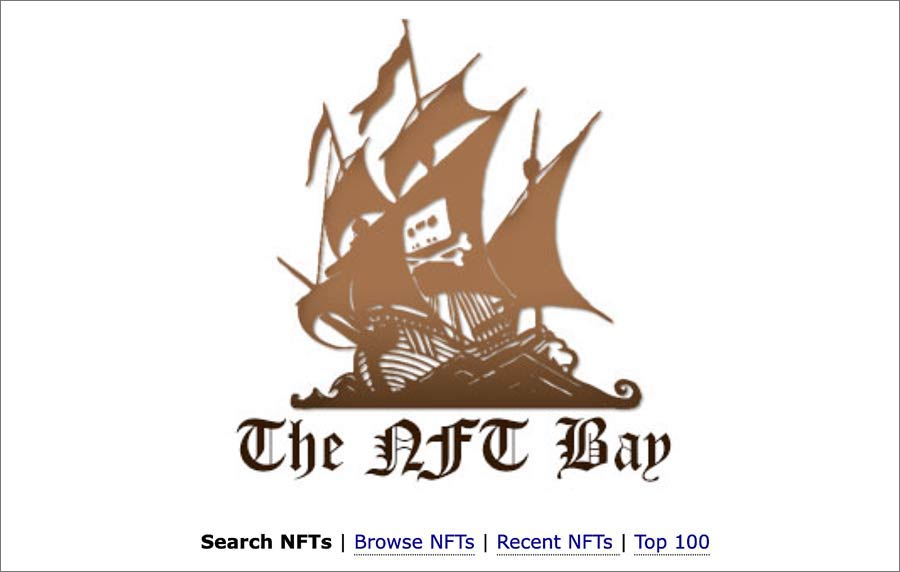
When word spread in online news publications last week about the launch of The NFT Bay, it reinforced our thesis here at Digital Culture Works that Web3 is not ready for prime time when it comes to major brands and creatives with valuable content who want to take part in the NFT revolution.
The problem begins with the fact that there’s a disconnect between NFTs 1.0 and the widely held perception of what an NFT is.
To a layperson with a passing acquaintance of nonfungible tokens, NFTs are the thing itself — the digital asset, the crypto artwork, the music track, the rich media work — and not simply an indelible record on the blockchain of where the digital item is located, which turns out to be hosted on a Web2 server nine times out of 10.

That’s a problem when a site like The NFT Bay (an homage to digital content piracy site The Pirate Bay) comes along and points out that “you can right click save-as” any NFT because the location of the digital asset is recorded on a public blockchain.
Now, that’s fine when it comes to crypto-artists who want as much visiblity for their digital artwork as possible and don’t care if a copy of their work winds up on an untold number of computers the world over.
But what about brands, which are fussier about protecting their intellectual property from being pirated?
Rolex does not countenance Rolex forgeries. Nor do Gucci, Louis Vitton or the countless other high-end fashion, jewelry and accessory brands. Nor do media companies, movie studios and book publishers. So when these companies begin to move their assets into the virtual world, they need some assurance that there won’t be hundreds of thousands of perfect digital knockoffs floating around the Internet.
Brands begin to test the waters
In Monday’s Defiant podcast, host Camila Russo and guest Geoff Cook, co-founder of design studio Base, took a deep dive into the subject of onboarding brands into Web3. Cook pointed out that the terminology and underlying features of Web3 remain opaque to the general public, when brands are looking for mass visibility and adoption when they embrace a new technology.

Cook, whose clients include the New York Times, MoMA and ING Bank, noted that a lot of the early crypto projects were built by techies, with sites ablaze with jarring or exuberant colors and a jumble of font type and playful emojis. “It’s a throwback to early Internet culture,” he said. He calls it an intentional “rebellion from fintech and from traditional finance.” (I encourage you to listen to the entire episode.)
Said Cook: “There is a reason that all insurance companies look like insurance companies and Ivy League schools all look like Ivy League schools [in their online presence]. Every industry or sector has certain design codes or even tropes that make them very recognizable and make them feel a part of that industry or sector.”
That branding aesthetic needs to carry over into Web3.
“The strongest brands in the world compete on emotion and perception, not on function,” he pointed out. Web3 is still at the early functionality stage.
A concern for protecting IP & valuable content
My background includes years working with Fortune 1000 companies on their social marketing strategies. From my initial conversations with brands about Web3, they understand these are early days for NFTs, blockchain and crypto, and that we’re building the runway as the plane is taking off. Most of them plan to remain on the sidelines until some fundamental new functionalities are introduced into the NFT ecosystem.
The concern I hear most often is, How are you going to protect my content? Yes, we’re happy to create cool, compelling original digital assets that work nicely in the metaverse or add a tasteful sheen to someone’s digital collection. But why does everyone else in the world get to copy it with a simple right click?
So widespread is the piracy problem that a new word that has entered the Web3 lexicon … which we’ve just added to our NFT Glossary:
Copyminting, or copy minting, is a relatively new term that refers to the fraudulent act committed when a person downloads someone else’s NFT and mints it as their own.
It’s no longer an isolated occurrence but a scourge of NFT marketplaces, given how easy it is to download, mint, take the crypto and run. (For more on NFTs and copyright concerns, see this recent Fortune essay, Copyright violations could crash the NFT party.)
Protection for digital content is a valid concern, one that’s still largely unappreciated by the NFT community. And while some adherents of Web3 remain wedded to the view that NFT content need to be fully transparent, another view is emerging. In this view, the transaction remains on the public record, but the original underlying assets needn’t be displayed for all the world to see — and copy.
That’s what we’re working on at Digital Culture Works and our upcoming solution Amberfi.
Would you like a demo of our working marketplace and middleware SDK solution with encrypted deliver for brands? Just drop us a line.






